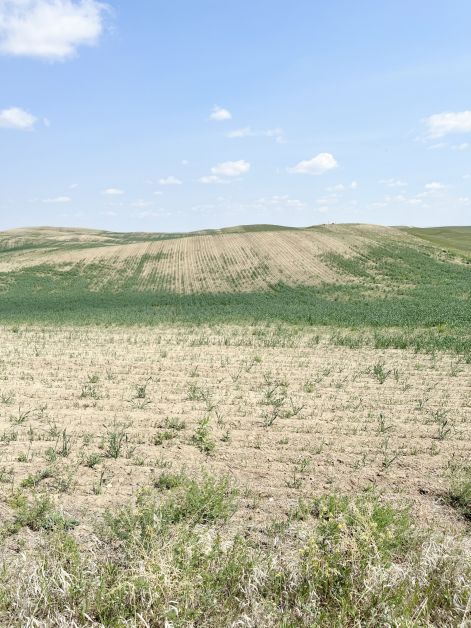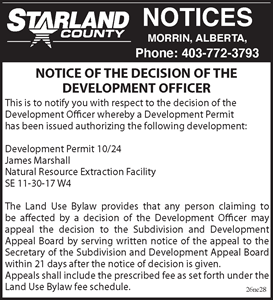
Due to challenges caused by prolonged drought conditions, including the threat of grasshoppers, Special Areas 2, 3 and 4 have declared an agricultural disaster.
Special Areas cover over five million acres in East Central Alberta and have been seeing a decline in moisture due to a shortage of spring runoff, precipitation and severe drought conditions. It declared an agricultural disaster in 2021, and the current declaration on July 12 marks the second in 20 years
“Dry conditions are not new to the Special Areas, but ongoing moisture deficiencies and hot temperatures have devastated crops and pasture throughout the region. Producers are struggling to find enough grass, water, and feed for their cattle. Farmers are facing widespread crop failures,” said Jordon Christianson, Chair. “Significant grasshopper infestations are making a very difficult situation worse in many parts of the Special Areas. Declaring an agricultural disaster is one way we can raise awareness of how serious this problem is with the province and with the federal government.”
According to a press release, the ongoing lack of precipitation and hot temperatures, especially during the earlier part of the growing season, have caused widespread crop failures, degrading pasture conditions, and stock water shortages. Producers are seeing wide-ranging crop losses on hay, pasture, range, and field crops. Consecutive years of severe drought in the region have already begun to force many producers to destock herds due to a lack of pasture and feed.
Justine Comeau, Special Areas 4 Agricultural Fieldman says conditions vary throughout the area due to its vast size. While most are experiencing harsh drought conditions, the pest conditions are different.
“There are places that have been really hard hit. What we are seeing on the Alberta Agriculture side is, all the service boards would be doing grasshopper surveys in August. We haven’t even seen the adult population peak yet,” said Comeau. “Any surveys we did give us a rough idea. It is not really a good predictor of what these populations could be in a couple of weeks.”
Declaring an agricultural disaster does not impact Special Areas financially but brings recognition to the difficult situation local producers are facing. The Board is looking to provincial and federal governments to provide information on agriculture relief programs in response to crop failures and persisting drought conditions, notes a release.
“With some of the extremes in the area, nobody is dealing with normal conditions across the board,” said Comeau. She notes the dryland areas, particularly towards the east, are typically more prone to pests.
“This year was particularly a rough winter because we thought we had such great snowpack, but essentially it rotted off. By the time spring melt came around, there wasn’t really any moisture left in that snow.”




























